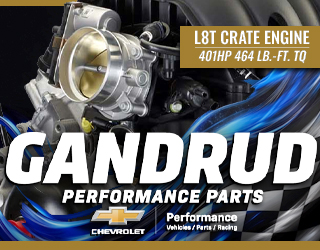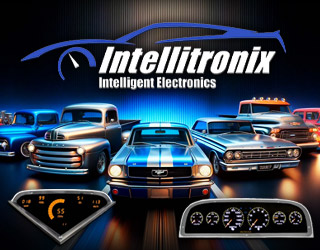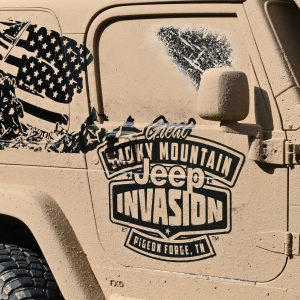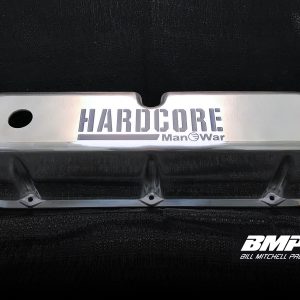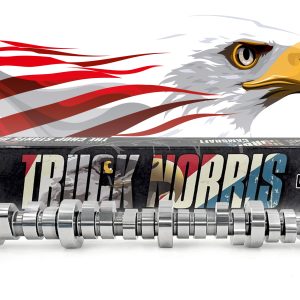July 16, 2023
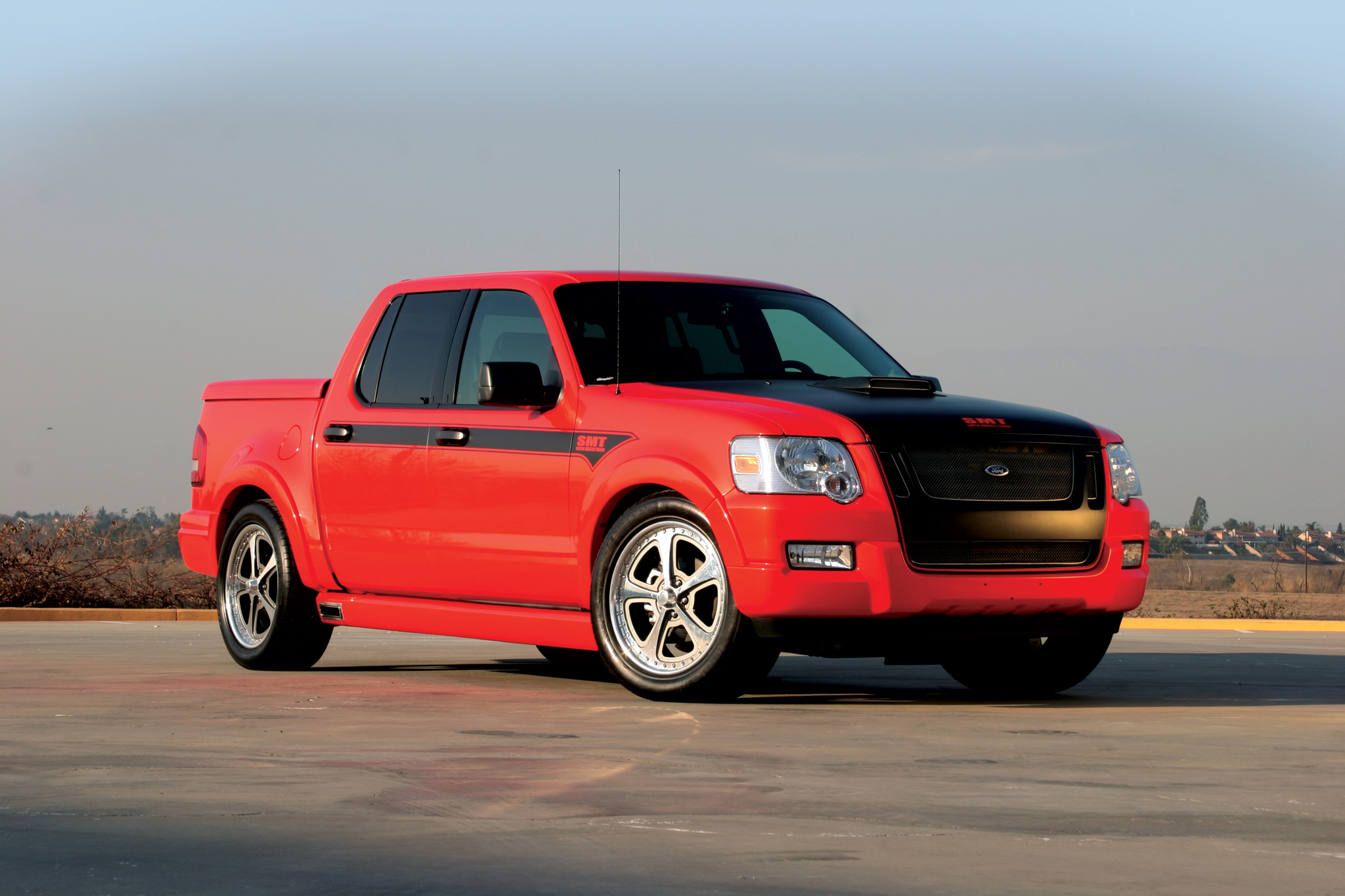
Shops such as Barry’s Speed Shop can take a brand-new, stock vehicle and turn it into a rolling showcase, and do it in a short amount of time. Many of our readers are familiar with Barry White’s “Wrecks to Riches” TV show, as well as the many technical stories we have presented on the work he has done. So when the owners of a company contact White they know they’ll get a vehicle that will attract attention, and it will be built by a shop that makes building outstanding custom vehicles its only business (well, that and being TV stars).
Author What You Need to Know Before Installing a Gen III Small Block in Your Classic Truck Since the introduction of the Gen III small-block engine in 1997, enthusiasts have been scouring junkyards, local pick-a-parts and aftermarket sources such as Street & Performance and Arizona Speed & Marine in search of the perfect engine package for their older pickups. Not since 1955 has an engine sparked so much interest and captured the imagination of so many builders. The first LS1 showed up in the ’97 Corvette, which immediately became of interest to all manner of hobbyists. GM recognized this and eventually began offering these soon-to-be popular engines in crate form. By then the engines had been available in Camaros and other GM cars, and finally in the truck line as the Vortec. These engines first appeared in the ’99-and-newer trucks, and now that they are readily available and reasonably inexpensive, they are very popular for early truck swaps. Originally based off the LS1, the Vortec engines were cast iron blocks with aluminum heads and could be found in the Silverado, Sierra, Yukon and Tahoe, with the most powerful being the LQ9, which is now in the Escalade with 345 hp and 390 lb-ft of torque. While more expensive than their 4.8- or 5.3-liter counterparts, they offer increased horsepower and torque. To find out more we called a local salvage yard and learned that we could pick up a 50,000-mile, 5.3-liter Vortec and 4L60E transmission for about $1,900-$2,000. Of course, pricing will have more to do with your own location and demand, and engine mileage is usually factored in. While this example is not going to come with everything you need to complete a swap, neither will the purchase of a new crate engine. These engines do not include the fuel tank and system, the cooling components or the computer, but all this can quickly be purchased with little problem, and much of it would require some modification. If you are looking for the more powerful LQ9, expect to spend upward of $3,000-$4,000 for a good low-mileage example. Finally, the LS1 and LS6 can also be found used in the $4,000-$5,000 range, complete with transmission. If you plan on attempting to produce serious power, purchasing the LS1 or LS6 is the most popular option, as tuning and bolting performance parts on the Vortec can become expensive. If you do not feel particularly comfortable with purchasing an engine from the salvage yard, companies such as Street & Performance, Arizona Speed & Marine and GM Performance Parts dealers offer a full line of LS engines, as well as polished parts and full warranties. Depending upon what year of truck you plan to install your new engine in, the vintage can make a real difference, as there’s more to installing an LS-series or Vortec engine into a truck than simply bolting it in and hooking up a fuel line. A wiring harness, fuel return lines and a gas tank that will accommodate the high-pressure fuel system are essential. Even the cooling system and the driveshaft are major considerations. So let’s look at choosing the right engine for your application. Depending on what look you are striving for with the build, how you use your truck will play a major role in the decision of what engine to purchase. If you plan on simply updating a late ’80s pickup, or even an early ’90s for that matter, a simple 4.8- or 5.3-liter engine will work and will be much simpler than starting with, say, a late ’50s or mid-’60s truck that was originally carbureted. If you are looking for serious power output, an LS1 or LS6 makes the best choice. They also come with a warranty, and there’s nothing better with a high-performance engine. When beginning your search for a Gen III, there are a few things that might prove helpful, as everyone wants either a new engine or one with the lowest mileage possible. Consider that every engine after 2003 uses drive-by-wire, which is an electronic throttle. So while throttle cables have been in use since the engine was first introduced, GM implemented a sensor and pedal locator to apply fuel load information to the engine controller. A single sensor and electric wire operates the throttle from beneath the pedal. There’s nothing wrong with the drive-by-wire system; you just need to get all the components from the junkyard to complete the install, including the pedal and the sensor. Mark Campbell of Street & Performance informed us that the drive-by-wire works great once installed. While many choose to swap the drive-by-wire to a throttle cable, it offers crisp throttle response and a clean installation with no cable needed to run through the firewall. If you do land a cable-driven engine, Lokar Performance Products offers a stainless steel braided throttle cable and oil dipstick for these engines that helps dress them up compared to the drab OE hardware. Once you have selected an engine and transmission and have all the necessary components it is time to begin the installation. There are a lot of options for mounting these engine packages in your pickup chassis, and what you use determines if the truck is to be a daily driver or a showstopper. GM has managed to keep its front framerails and the front crossmembers nearly unchanged since the early ’60s, with the exception of various motor-mount styles. Early Classic Enterprises offers a direct bolt-in for the Vortec crowd, which includes everything needed to set the engine into place in a ’60-’72 Chevy (and GMC) pickup. After speaking with the guys at Early Classic, we learned that you can simply relocate your stock transmission mount for the 4L60E on the ’60-’72 Chevy pickup, since the new trans uses the traditional 350, 400 and 700R4 trans mounts. If you are installing the engine into the newer genre of trucks, Street & Performance offers motor-mount adapter plates that bolt to the engine and allow the use of the
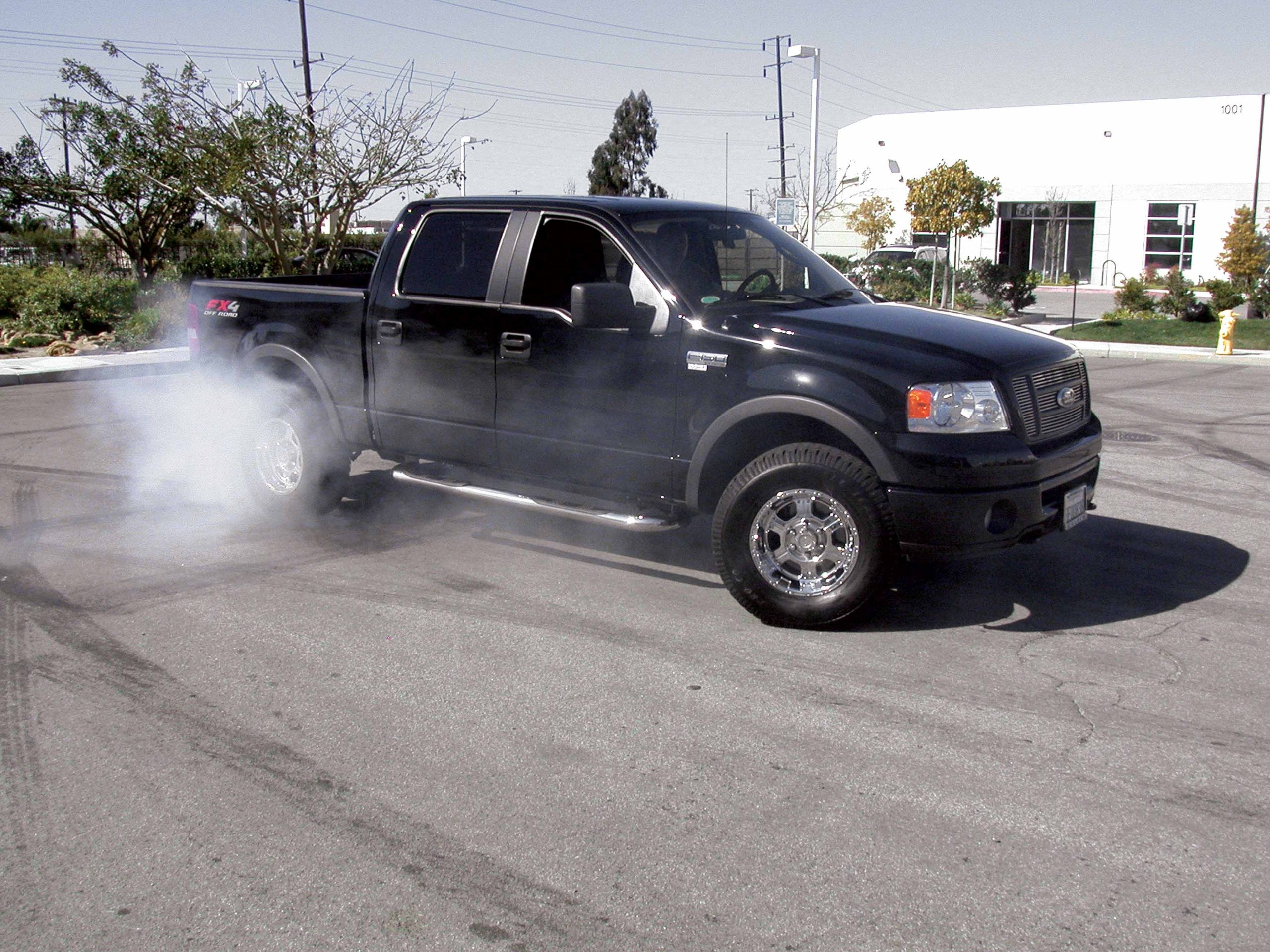
When you’re talking power, few know more about it than Joe Granatelli. Not only does he come from the legendary Granatelli racing family, Granatelli is a licensed Pro Street drag racer and spent time as an instructor at the Roy Hill Drag Racing School. In 1989, he founded Granatelli Motor Sports, and since that time he has been busy designing and manufacturing items that add power to your truck or car. Those items include the Big G systems as well as exhaust and other high performance systems for not only gas and diesel pickups, but also for some fast Mustangs as well.
Two of those performance items are the Fuego Tuner and Hi-Performance Coil-On-Plug Connectors. The Fuego is a hand-held computer tuner that not only adds horsepower, it allows the person to control many of the actions associated with increasing the performance of the truck. Do you want the trans to shift not only firmer but also at a different rpm than the stock unit? The Fuego is capable of doing it. Do you have bigger tires? No problem. Want to retard or advance the spark? The Fuego can do that too.

Becky Walker, a housewife and career woman from Jarrell, Texas, has two hobbies: raising Great Pyrenees show dogs and her purple prism 53 Chevrolet show truck, appropriately named 53 PAW. About six years ago, my husband, Billy, dragged this raggedy old 53 Chevrolet farm truck home and told me he was going to fix it up for me to drive. That was the beginning of a major project that lasted over two years. We worked every night, weekend and holiday on that truck. In fact, I distinctly remember spending one New Year’s Eve, back in 2004, helping Billy change out two sets of springs.
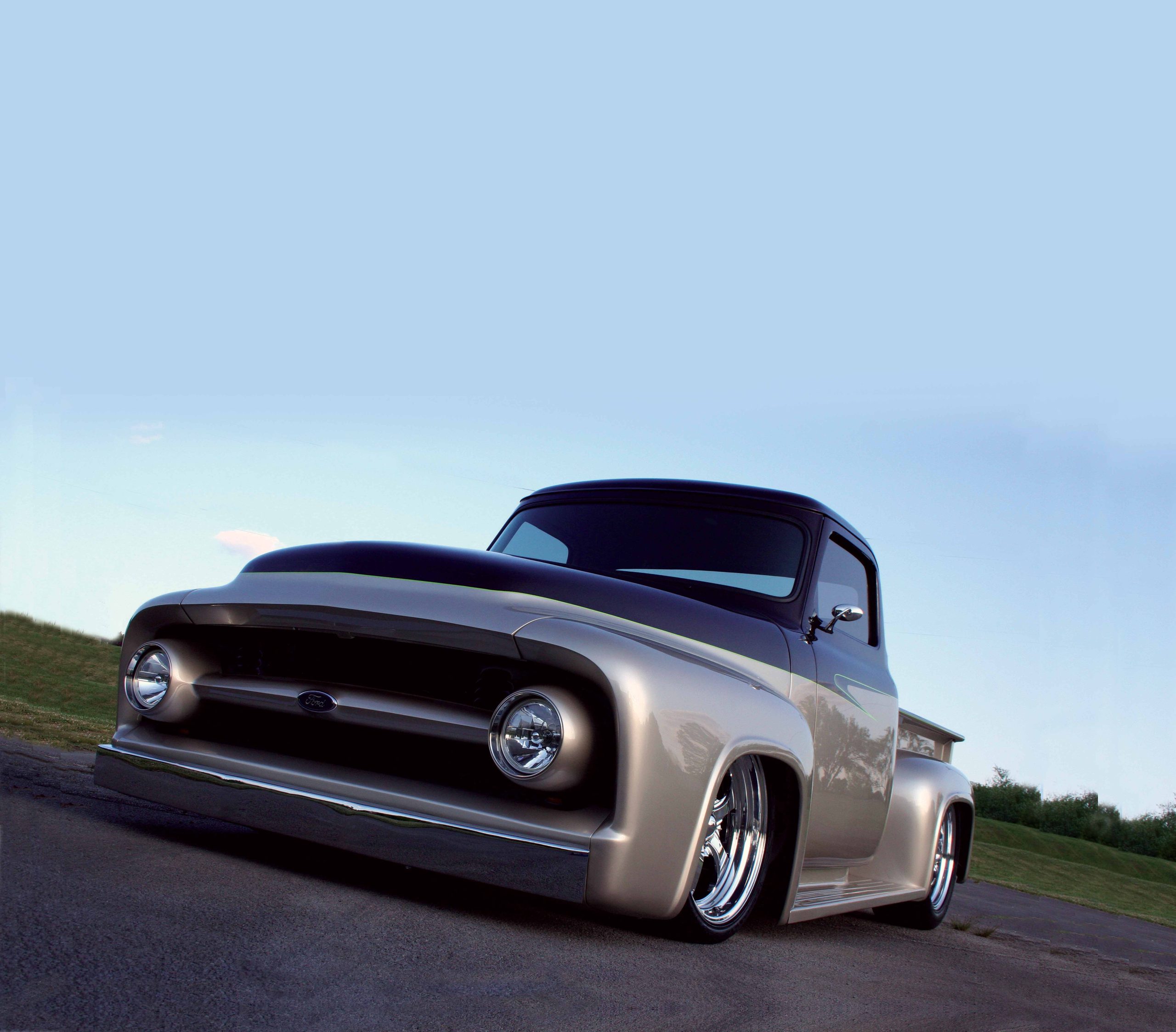
Join Jeff Schwierman in his quest for the prestigious F-100 Truck of the Year award as he breathes new life into a ’53 Ford F-100. From the ground-up build on a Fat Man Fabrications chassis to the powerful Ford Racing 351W engine, every detail of this custom pickup is crafted to perfection. Follow along as Schwierman and his team reshape the classic truck into a true showstopper, setting new standards for classic Ford truck enthusiasts.
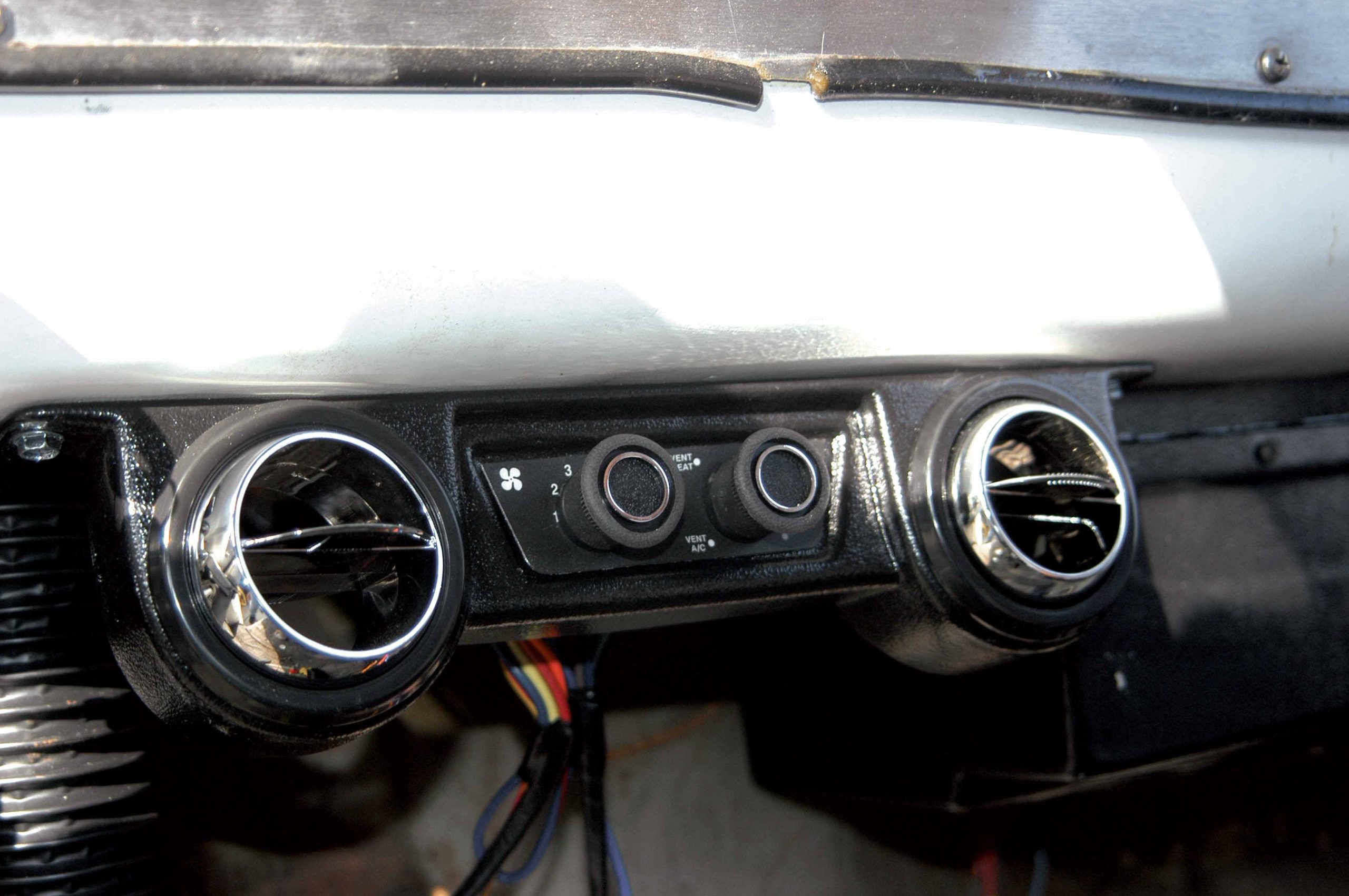
Witness the transformation of a ’55 Chevy panel truck as it embraces modern comfort with the installation of a Hot Rod Air climate-control system. Designed for convenience, this aftermarket system seamlessly integrates power steering, power brakes, and air conditioning, ensuring a comfortable and enjoyable driving experience. Follow the step-by-step installation process, emphasizing the easy-to-follow instructions and plug-in connections. Discover the potential for personalization with chrome-plated upgrades, billet mounts, and other enhancements offered by Hot Rod Air, allowing enthusiasts to customize their street rods according to their preferences.
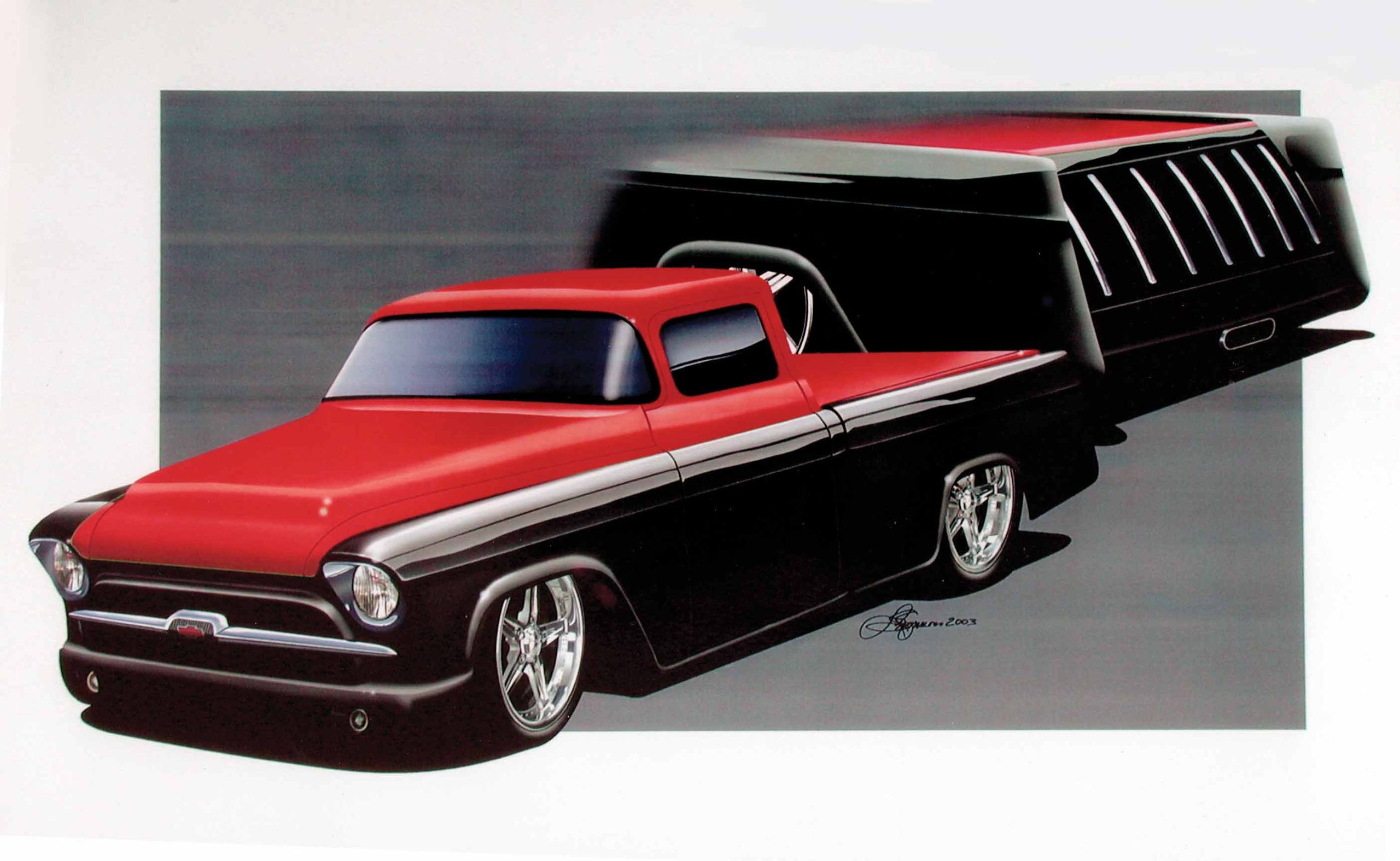
Here’s Part One Of Two On Chopping The Top Of Our Twin-Supercharged, ZR-1-Powered ’56 Chevrolet Big-Window Pickup
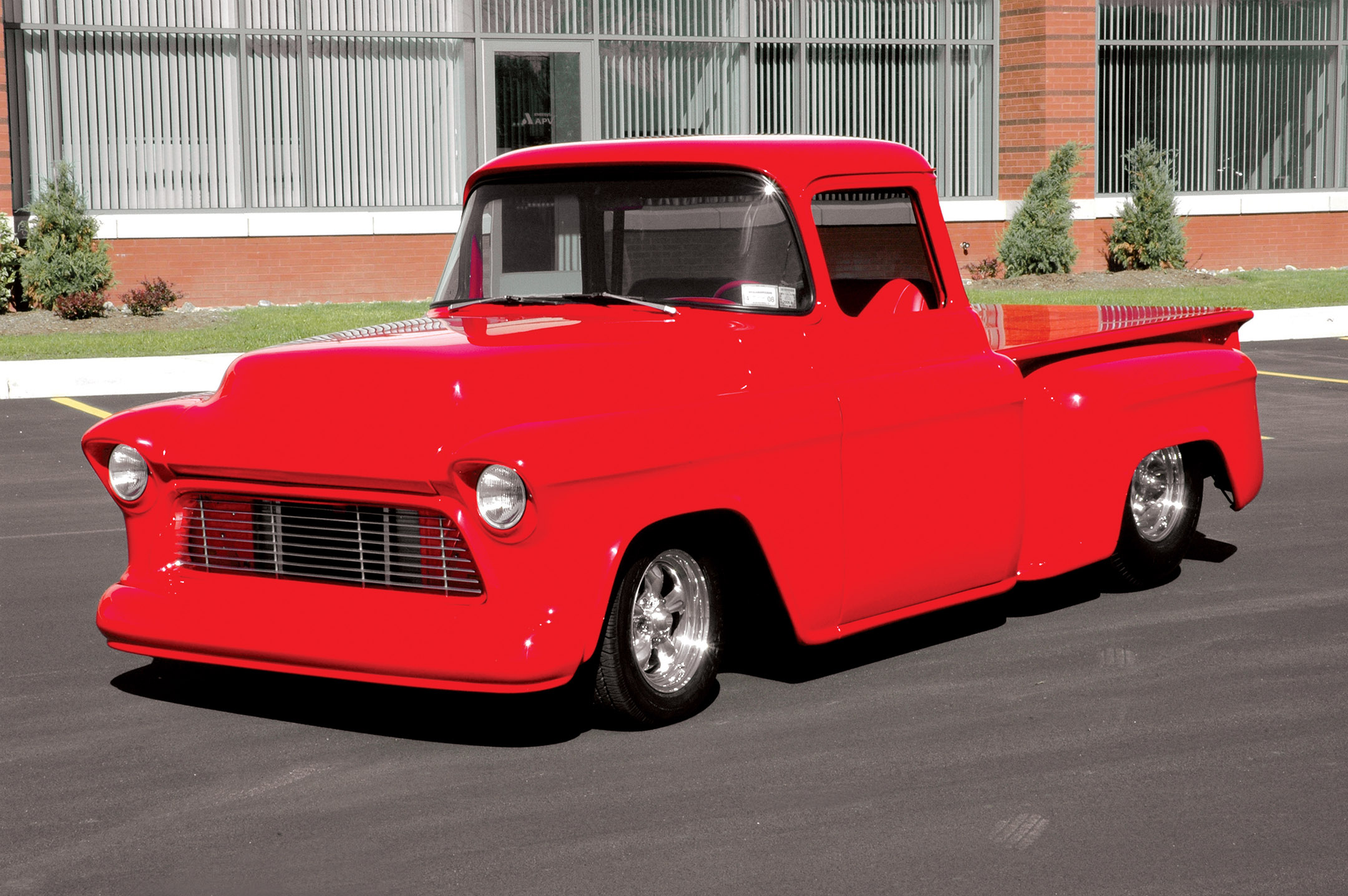
It often takes a serious challenge to test a person’s capabilities. After years of driving a string of performance cars, Terry Short wanted something different sitting in his North Tonawanda, New York, garage. So, he set out and found this ’55 Chevy big-window pickup in an apple orchard. He just knew he had met his challenge.
Terry Short’s ’55 Chevy pickup has a just-right rake, a monochromatic finish on a super-smooth body and a potent big-block Chevy. All these elements combine to make this Hot Rod Red truck a perfect cruising machine. Short’s goal was to build a truck that if you couldn’t see it, then you could certainly hear it coming. Though the roof went unchopped, the remainder of the body was extensively reworked and is devoid of chrome accessories.
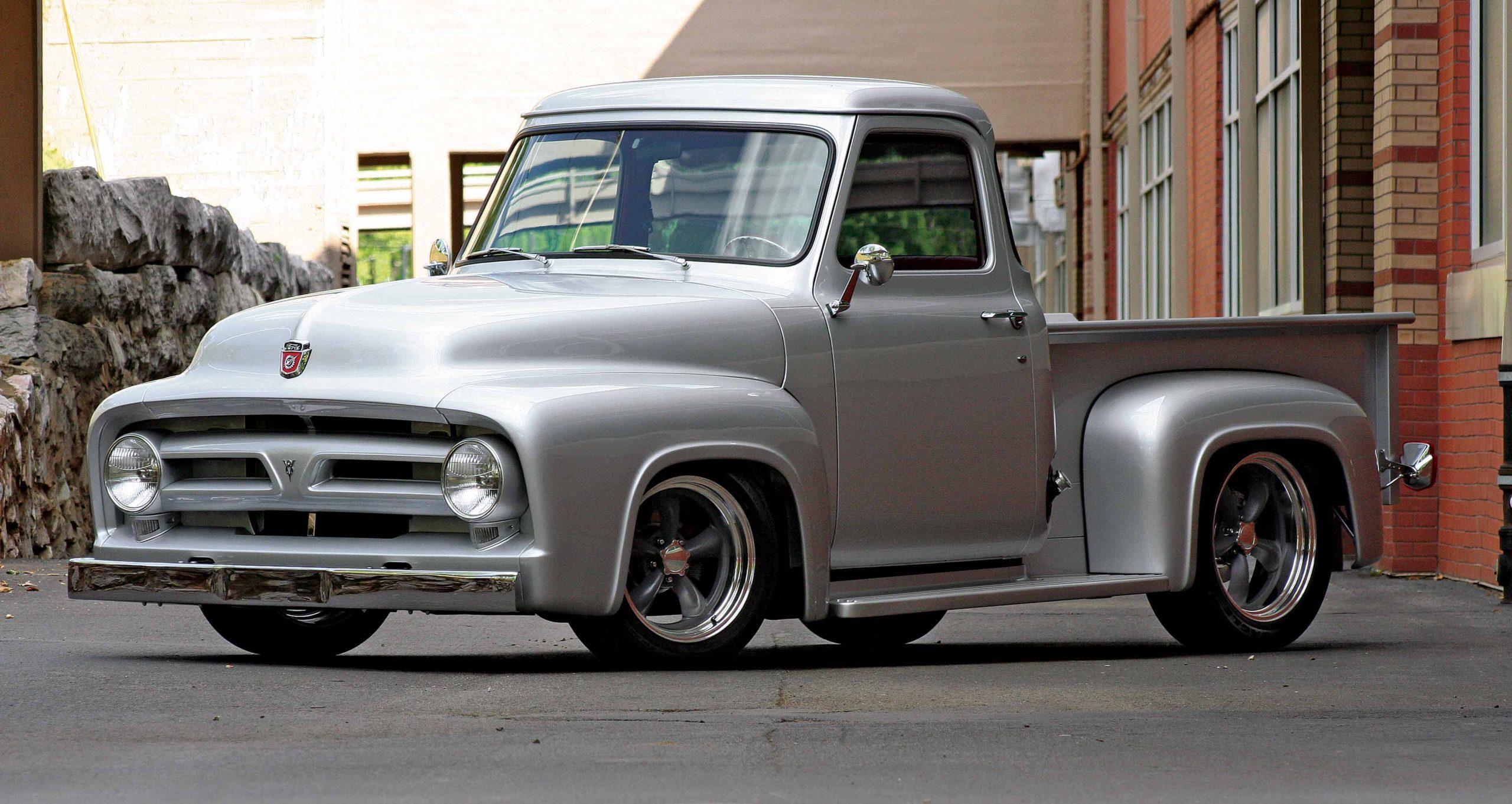
Longtime classic truck enthusiast Mark Coleman has built countless classic cars and trucks over the years, including a trio of early Mustangs, a ’56 F-100 Ford panel truck and a ’55 Ford SuperCab, which have graced these very pages. When it came time to build another truck, Coleman took a long, hard look in his own backyard and decided that his old ’53 F-100 would be the prime candidate.
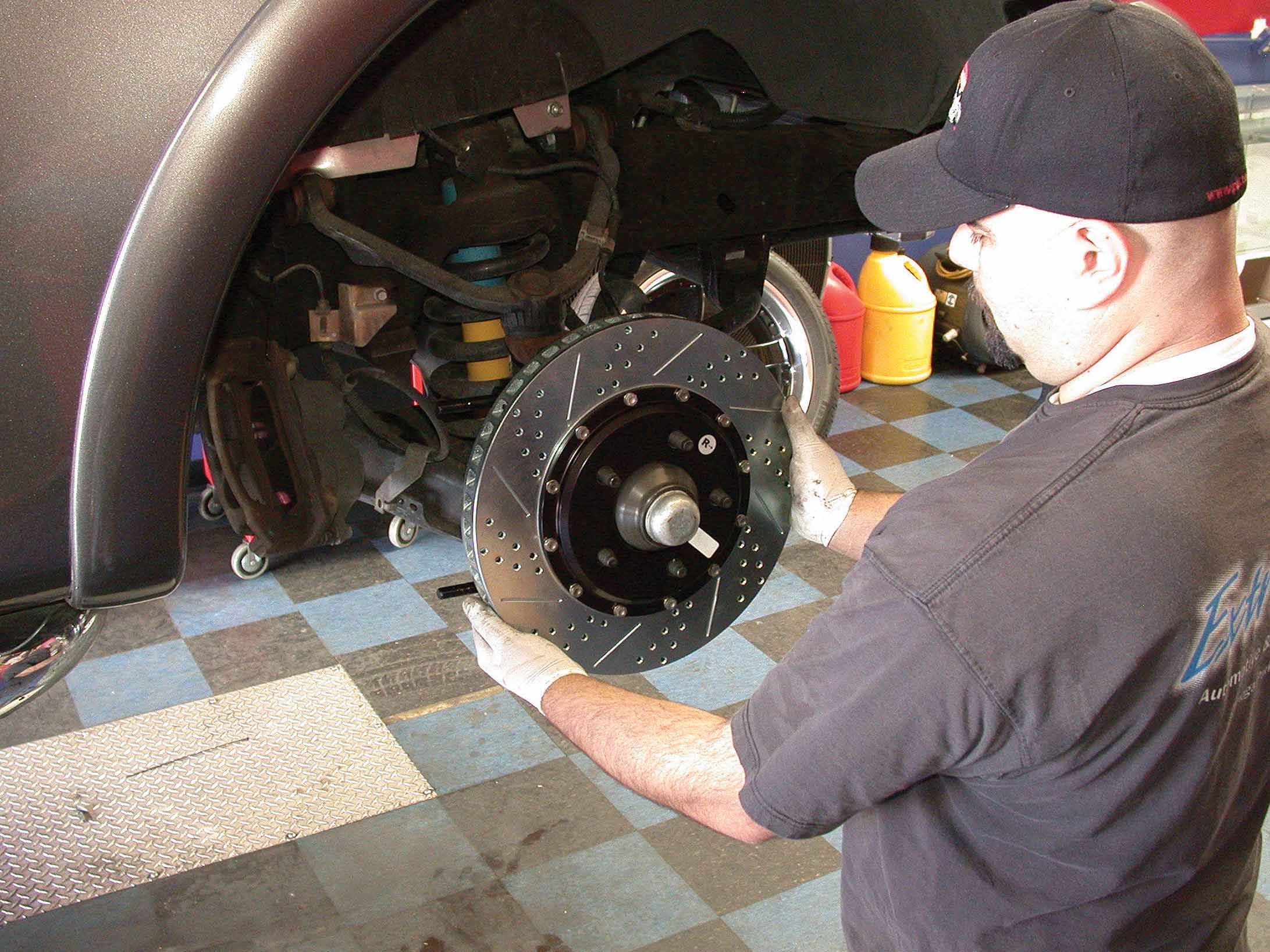
There is no other more important system than braking, so when the folks at Baer told us at the SEMA Show that they were finishing up their latest kit—one designed to fit the Ford F-150, as well as the Expedition, Navigator and Navigator 4WD—we wanted to see one installed. Baer has been producing high-?performance braking systems since 1986. The company specializes in high-performance, bolt-on brake systems that radically enhance the ability of the otherwise stock brake systems.




